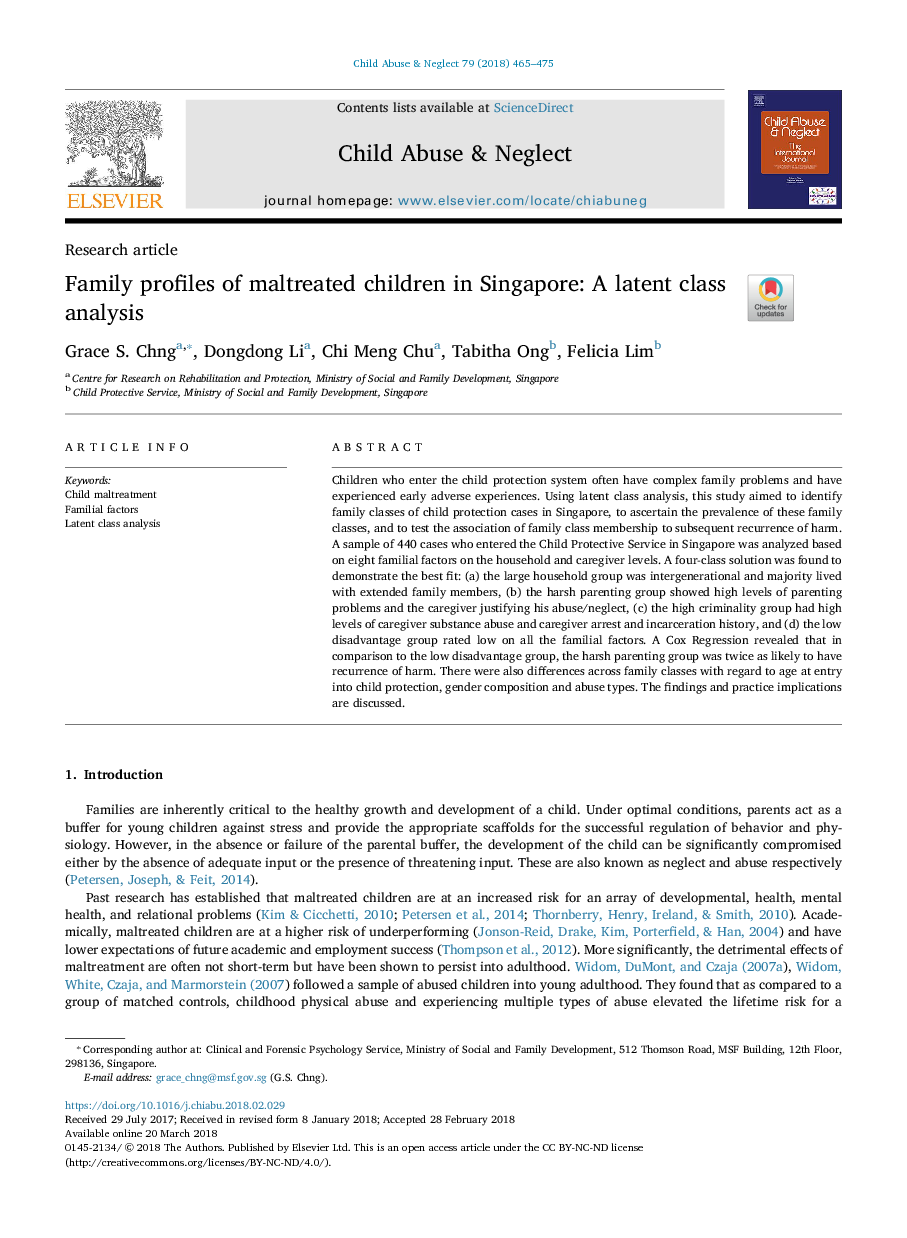ترجمه فارسی عنوان مقاله
پروفایل های خانوادگی کودکان خردسال در سنگاپور: تجزیه و تحلیل طبقه پنهان
عنوان انگلیسی
Family profiles of maltreated children in Singapore: A latent class analysis
| کد مقاله | سال انتشار | تعداد صفحات مقاله انگلیسی |
|---|---|---|
| 150536 | 2018 | 11 صفحه PDF |
منبع

Publisher : Elsevier - Science Direct (الزویر - ساینس دایرکت)
Journal : Child Abuse & Neglect, Volume 79, May 2018, Pages 465-475
ترجمه کلمات کلیدی
بدرفتاری با کودک، عوامل خانوادگی، تجزیه و تحلیل کلاس خوش آمدید،
کلمات کلیدی انگلیسی
Child maltreatment; Familial factors; Latent class analysis;

